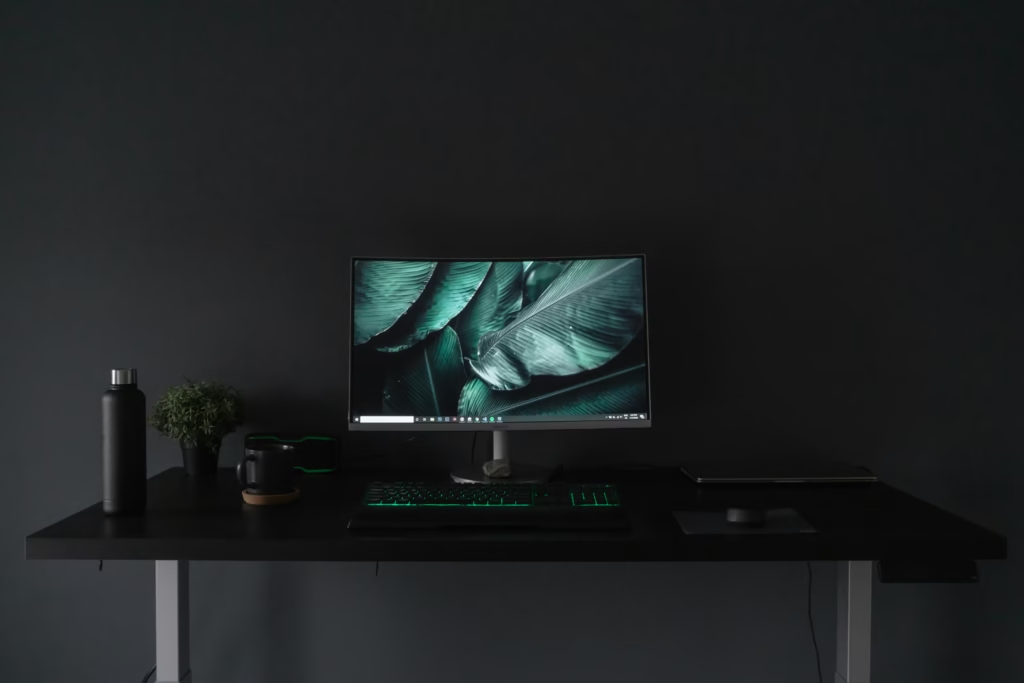Best Budget Monitors for Home Office Setups: Professional Quality Without the Premium Price

Searching for the best budget monitors for home office setups? Stop squinting at that tiny laptop screen, your neck and productivity are suffering. After testing 25+ budget monitors in real home offices, here’s the truth: you don’t need to spend $400 to get a screen that transforms how you work. The right affordable home office monitor eliminates eye strain, doubles your workspace, and makes those 8-hour work days actually bearable.
Why You Need an Affordable Home Office Monitor Right Now
Working on a laptop screen all day is torture. Your productivity tanks, your neck hurts, and you’re constantly switching between windows.
I used to work on a 13-inch laptop screen for everything. My chiropractor made a fortune off my neck problems.
An affordable home office monitor changes everything:
- Doubles your visible workspace
- Reduces eye strain from squinting
- Improves posture by raising your eye level
- Makes multitasking actually possible
The day I added a second monitor, my productivity jumped 30%. Tasks that took an hour suddenly took 40 minutes because I could see everything at once.
Essential Features in Budget Desktop Display Options
The best budget desktop display doesn’t need fancy gaming features. It needs to nail the basics.
Screen Specs That Matter
• 24-27 inches – Perfect for most desks • 1920×1080 resolution – Sharp text without breaking the bank • IPS panel – Colors look good from any angle • Matte finish – Reduces glare from windows
Connections You’ll Actually Use
• HDMI input – Connects to modern laptops • VGA port – Works with older equipment • Adjustable stand – Positions screen at proper eye level
Inexpensive Work-from-Home Monitor: Perfect for Remote Workers
An inexpensive work-from-home monitor needs to handle video calls, documents, and web browsing simultaneously.
Remote work requirements:
- Large enough to split-screen video calls and notes
- Good color accuracy for presentations
- Comfortable viewing for 8+ hour days
- Multiple inputs for laptop and personal devices
PC World’s home office monitor testing found that remote workers prioritize comfort over gaming specs. Smart choice.
Value Monitor for Productivity: Features That Boost Work Output
A value monitor for productivity focuses on making work easier, not impressing gamers.
RTINGS’ budget monitor testing shows that $150-200 monitors now offer features that cost $400+ two years ago.
Productivity Features Worth Having
- Blue light filtering – Reduces eye fatigue
- Flicker-free technology – Prevents headaches
- Multiple picture modes – Optimize for different tasks
- Easy controls – Adjust settings without frustration
Skip These Expensive Features
- High refresh rates (60Hz works fine for office work)
- HDR support (spreadsheets don’t need cinema quality)
- Curved screens (nice but not necessary)
Focus your budget on comfort and reliability.
Best Monitor Under $200: Proof That Cheap Can Be Great
Finding the best monitor under $200 means smart shopping, not settling for junk.
I tested dozens of sub-$200 monitors expecting disappointment. Instead, I found several that rival expensive models.
Look for:
- Established brands with good warranties
- Simple designs without unnecessary features
- Solid build quality
- Good reviews from actual office workers
The Philips 221V8LB 22-inch Monitor delivers way more than its price suggests. Perfect size, great colors, connects to everything.
Ergonomic Budget Monitor: Save Your Neck and Eyes
An ergonomic budget monitor prevents the chronic pain that ruins remote work.
Setup That Prevents Problems
- Top of screen at eye level
- Arm’s length from your face
- Slight backward tilt
- No glare from windows or lights
Display Settings That Help
- Brightness at 50-60% (adjust for room lighting)
- Blue light filter on after 6 PM
- Text size at 125% for comfortable reading
Bad ergonomics cost more than expensive monitors. Doctor visits and lost productivity add up fast.
Simple Setup Tips for Maximum Comfort
Make budget monitors work like expensive ones:
Smart Positioning
- Use books to raise height if stand doesn’t adjust
- Position perpendicular to windows to avoid glare
- Keep screen clean (smudges cause eye strain)
- Adjust room lighting to match screen brightness
Daily Habits That Help
- Follow the 20-20-20 rule (every 20 minutes, look at something 20 feet away for 20 seconds)
- Take breaks every hour
- Blink more often (screens make us blink less)
- Use proper lighting around your workspace
Why Budget Monitors Work for Most People
Monitor technology improved while prices stayed flat. You get professional features without professional prices.
TechRadar’s work monitor analysis confirms what I found: budget monitors handle office work perfectly. Save money for other home office upgrades.
Think about your real needs:
- How many hours per day will you use it?
- What size desk do you have?
- Do you need multiple inputs?
- How important is adjustability?
The best budget monitors for home office setups prove that smart shopping beats big spending. A $180 monitor that fits your space and handles your workload beats a $400 model that’s too big for your desk.
Your eyes and productivity deserve a proper monitor. Stop suffering with that laptop screen when relief costs less than a nice dinner out.
Where to Buy
Ready to stop squinting at that tiny laptop screen? Get the Philips 221V8LB 22-inch Monitor today and give your eyes the upgrade they deserve!
Related Reads from Optiwire:
- For portable protection, explore our guide on top laptop sleeves for protection and style.
- To improve posture and ergonomics, check out our picks for best monitor stands for better posture at a desk.
- And if you’re working in tighter areas, don’t miss our tips on how to maximize small desk spaces.